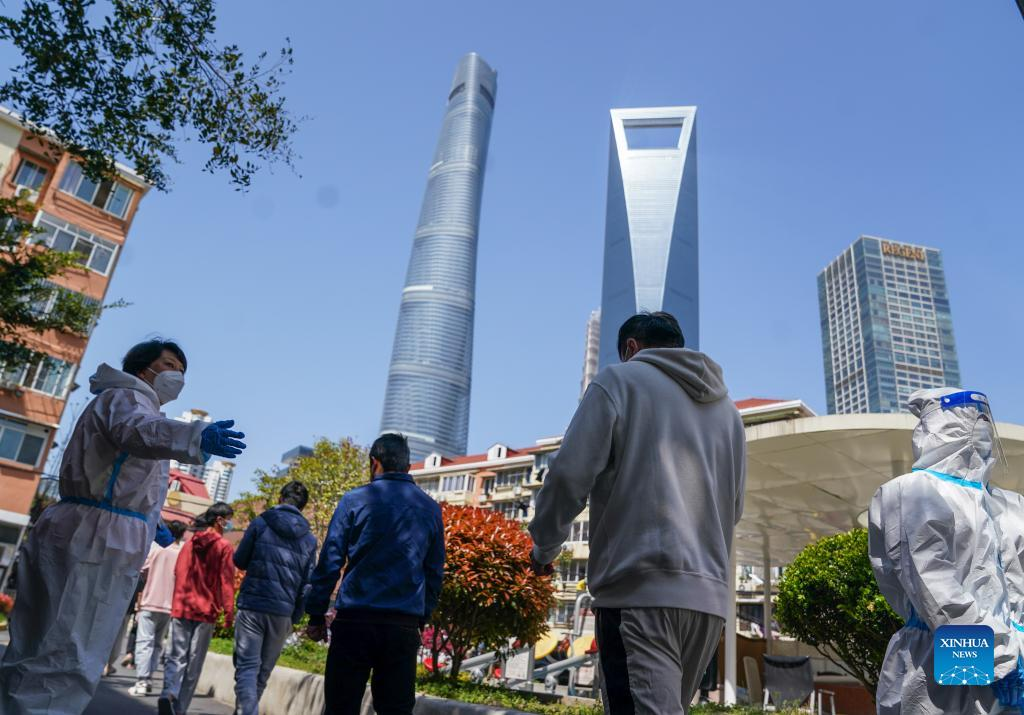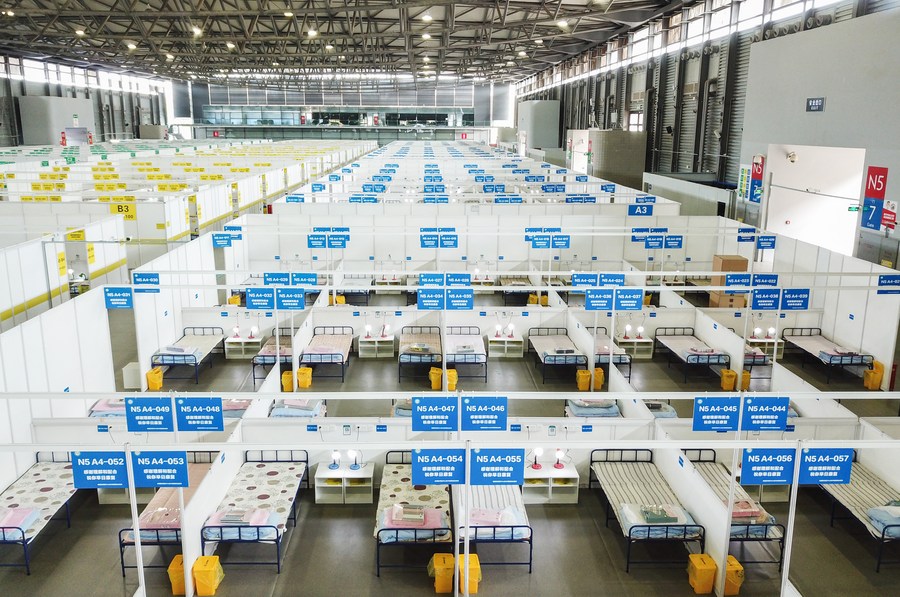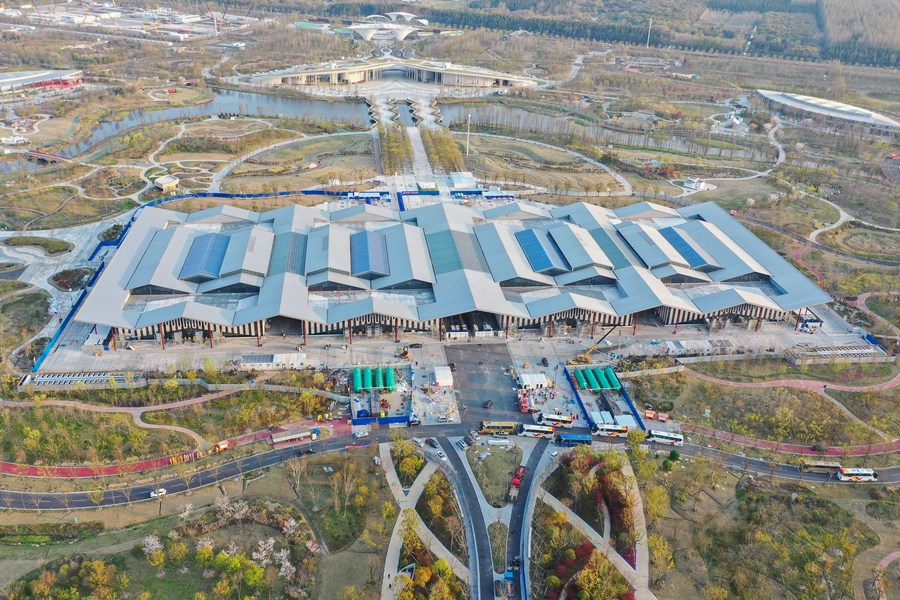As Shanghai Confronts Covid, Local Residents Stay Resilient

Lockdowns and quarantines are not easy for anyone, including Chinese citizens but by following the stringent measures, China will come out stronger and healthier than ever before.
Amid the numerous challenges that Shanghai residents must contend with to curb the spread of the Coronavirus – Omicron variant, the city will eventually see glimmers of hope and the locals can return to business as normal. But for the moment and for the following weeks, Shanghai, China’s most populous city and the nation’s finance hub, still struggles under strict social distancing and public quarantines. In other words, local residents have not reached a stage for coming out of harm’s way, while thousands of new cases in the city’s limits have been reported daily for the past week.
According to public health figures released on April 6, there were 16,766 asymptomatic cases of Covid newly reported while another 311 new cases were symptomatic in the prior 24 hours timeframe. For the record, the medical term, ‘asymptomatic,’ would infer a patient tested positive for the virus but showed no visible symptoms from it.
Public health officials have implemented measures city-wide to impose mandatory nucleic-acid testing and this could be a factor to explain the rise in numbers. It’s a real ‘numbers game’: the more people who get tested, the more chances of more locals testing positive for the virus. But we can take note of some very positive news from the new Coronavirus cases. Few people are getting severely ill, although this wave of Omicron variant had brought 3,247 new symptomatic cases and 87,368 asymptomatic cases in Shanghai since March 1, according to the official statistics.
This new wave of covid first hit Jilin Province, then Shenzhen, and now Shanghai. But only two persons had died in Jinlin on March 18 and they were elderly patients already suffering from an unrelated chronic illness. Nonetheless, the Shanghai Municipal Government has stood on alert.

Staggered lockdowns and quarantines
The Chinese government fully understood that enforcing a city-wide shutdown to tackle Covid could cause a sharp drop in China’s domestic economic activities. Shanghai is home to the Shanghai Stock Exchange, Shanghai Gold Exchange, and the regional Asia-Pacific headquarters to major multinationals.
Accordingly, on the evening of March 27, local officials announced plans to implement tough social distancing measures in phases. The city is divided by the eastern and western half with the Huangpu River running across as the dividing line. The Pudong District which represents the eastern half went into lockdown from midnight March 28 to midnight April 1.
Then the Puxi District, the western half of the city, entered a quarantine phase starting from midnight April 1 to midnight April 5. The lockdown sees the closure of all non-essential shops and public facilities. Locals could not use public transportations in restricted zones; people in apartment buildings could not depart from their compounds unless they were employed in jobs, such as in law enforcement, public health, government, logistics, e-commerce delivery drivers, and grocery store workers.
Hence, Shanghai’s busy Pudong District had transformed into a ‘ghost town’ for the past week and the same for Puxi from April 1-5. Additionally, some people in Pudong had their quarantines extended for another few days. Anyone residing in an apartment building where a person has Covid must stay inside for an extended 10 days. Those living in a compound but not in the same building of Coronavirus patients will have to stay at home for another three days.
The conditions sound tough but Shanghai is a wealthy city and they have the capacity to endure for the time being, and when the quarantines come to an end there, we should anticipate a fast rebound.

Containing the economic impact
There’s no denying that Shanghai and China will face a deep economic impact for the short to mid-term outlook. Beijing continues to adhere to the ‘zero Covid’ policy and that entails Chinese public health officials taking necessary and immediate measures to curb the spread of the Coronavirus.
Shanghai has an international shipping port and it’s one of the busiest in the world. The city has many factories and warehouses located in its ‘FTZ (Free Trade Zone)’ District and they were placed there to boost foreign trade activities. China is the world’s leading manufacturer and exporter.
Accordingly, the Caixin/Markit manufacturers’ ‘purchasing managers’ index (PMI) in China has dropped from 50.4 in February to 48.1 in March. It’s the steepest drop in factories’ activities in the country for one month since February 2020 when China had entered a partial lockdown phase to tackle the Coronavirus.
But other factors are at play to explain China’s impending drop in manufacturing and exports. Shenzhen in southern China’s Guangdong Province had been hit by an upsurge of new Covid cases in early March, which led to city-wide business closures. Shenzhen is a trading hub for China as well.
Additionally, the Russia-Ukraine conflict will weaken global demand for Chinese exports for the rest of the year. The North American and European markets will get hardest hit as US-led sanctions will result in severe supply chain disruptions, sky-high inflation rates, as well as impending energy and food shortages that could lead to a global recession or depression for the second-half of the year.
Shanghai’s temporary halt in business activities could be a case of good timing as lower gas demand in the city has caused gas prices to drop nationwide in the immediate impact. And so we see light at the end of the tunnel.

On the road to recovery
The Chinese Center for Disease Control and Prevention, China’s CDC, has already learned important lessons from the recent upsurge of new Covid cases in Shanghai. Local officials have opened up to increasing imports of new Coronavirus vaccines and therapeutic drugs, while the Shanghai Municipality has offered to provide more subsidies to small businesses and to introduce more preferential tax treatments and policies.
According to the Global Times, Zeng Guang, former chief epidemiologist for China’s CDC, said that China is indeed facing a “tough battle,” but there have been few reported deaths and, in both cases, they were co-morbidity, meaning the patients had life-threatening ailments before getting diagnosed with the virus.
Shanghai’s hospitals and emergency medical treatment facilities did not see a huge uptick in Covid patients requiring urgent care. Therefore, Zeng believes that it’s “time for the country to explore ways to cope with large-scale outbreaks.”
Nonetheless, we should not anticipate Beijing to make dramatic adjustments to the ‘Zero Covid’ policy in the near future. The Chinese government has taken a people-centered approach to confronting the pandemic. And just imagine if the nation’s public health officials had taken a more light-hearted approach, the numbers of new Covid cases and deaths could have hit a catastrophic scale.
Lockdowns and quarantines are not easy for anyone, including Chinese citizens but by following the stringent measures, China will come out stronger and healthier than ever before.
The article reflects the author’s opinions, and not necessarily the views of China Focus.
 Facebook
Facebook
 Twitter
Twitter
 Linkedin
Linkedin
 Google +
Google +



